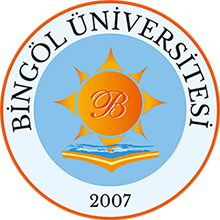Consumer-awareness and information sources on food safety: A case study of Eastern Turkey
Özet
Purpose: The purpose of this paper is to emphasize the importance of the sources and means of communications that inform consumers about food risks. Another basic aim of this study is to identify certain effects of communication, such as a change, if any, in consumers' purchasing habits as a result of information they obtain. Design/methodology/approach: Field research was carried out in urban areas of Van province, which is located in the eastern part of Turkey. Questionnaire surveys were conducted through face-to-face interviews with consumers. The sample size was 300 determined using sampling selection method. The data obtained were classified and interpreted according to the education level of the consumers. Chi-square analyses were added to selected charts. In addition, correspondence analysis was used to analyze the general characteristics of consumers related to change in consumption habits and information level regarding the organizations, which supervise food enterprises. Findings: Television was the main information source about food safety for all groups. It was found that consumers changed their food purchasing habits according to the information they received from various sources. However, unlike other groups, those with the lowest educational level mostly took information from health professionals. It was found that 85 percent of participants with a university-level education changed their food purchasing behavior, compared with 56 percent of the participants in the lower educated consumer group. While 46 percent of participants preferred only food products with a quality guarantee, 29 percent of consumers stopped purchasing the food product and 18 percent of consumers began to pay greater attention to food labeling. Originality/value: This study assessed changes in consumer attitudes towards the consumption of food products during the preceding 6 months after receiving information from various communication tools regarding food safety. © Emerald Group Publishing Limited.
Bağlantı
https://www.scopus.com/inward/record.uri?eid=2-s2.0-72049120951&doi=10.1108%2f00346650911002977&partnerID=40&md5=41e49103e051a8e3da25c734c7e4a16dhttp://acikerisim.bingol.edu.tr/handle/20.500.12898/5122
Koleksiyonlar

DSpace@BİNGÖL by Bingöl University Institutional Repository is licensed under a Creative Commons Attribution-NonCommercial-NoDerivs 4.0 Unported License..













